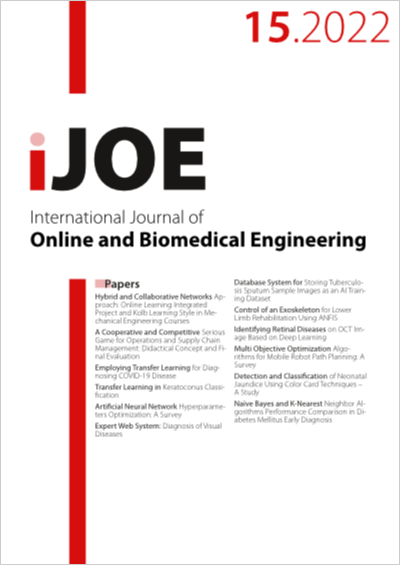Detection and Classification of Neonatal Jaundice Using Color Card Techniques – A Study
DOI:
https://doi.org/10.3991/ijoe.v18i15.32053Keywords:
Medical Data Mining, Computer Vision Techniques, Feature Extraction, Feature Fusion, Feature Selection, Classifier, Machine Learning, Deep Learning, Color Card Techniques.Abstract
--- In a newborn baby, the particular complication is jaundice. Jaundice is due to many reasons. An increase in the bilirubin level denotes the presence of jaundice. Neonatal hyperbilirubinemia is most common in the first postnatal week. Early prediction and classification of jaundice are essential to reduce the mortality rate. Diagnosis of the disease using computer vision techniques helps to achieve accuracy in prediction and classification. Here I studied and extracted the information from medical data mining and achieved the goal. It involves examining, analyzing, extracting, selecting, and classifying the features. Finally, it provides treatment suggestions It enables the physician to perform early prediction and provide appropriate jaundice treatment. Computer vision and machine learning techniques make the process easy and simple. The optimized method of classification increases accuracy.
Downloads
Published
How to Cite
Issue
Section
License
Copyright (c) 2022 Bharani Nayagi S

This work is licensed under a Creative Commons Attribution 4.0 International License.



